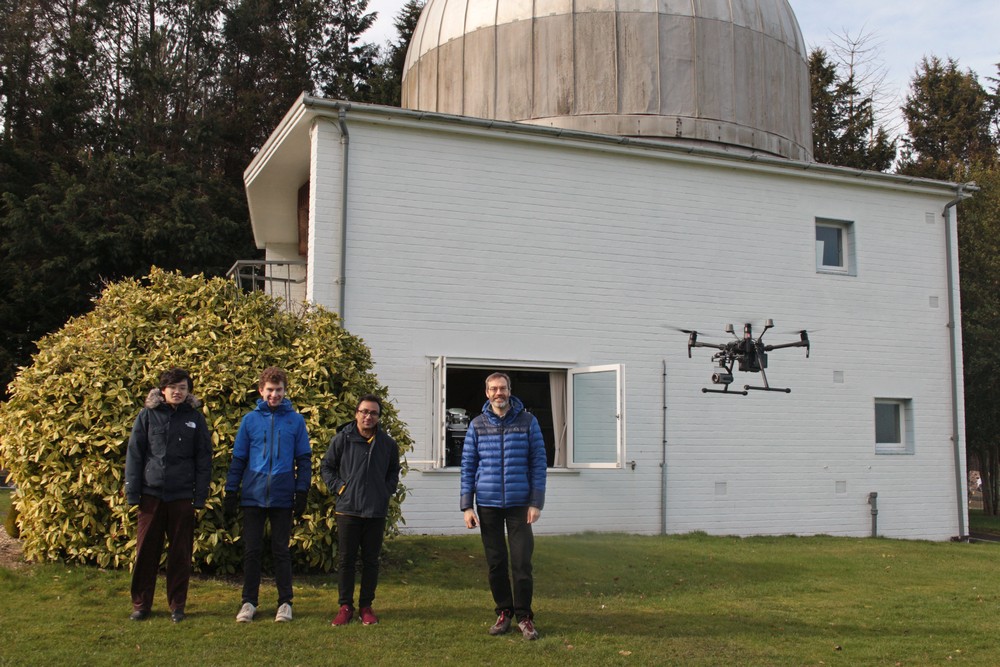Triple-frequency collection of in-flight drone radar signatures.

Photo of members of the Millimetre Wave Group during the trial along with DJI Matrice drone, outside the radar test lab at the University Observatory.
The Millimetre Wave Group recently carried out a trial to collect the in-flight radar signatures of multiple types of drones at three different radar frequencies. Six different types of drone spanning a range of sizes and designs, including quadcopters and hexacopters, were flown at ranges from ~30 to ~100 m whilst data was collected using three of our in-house developed radars: Blunderbuss, T-220 & Theseus which operate at frequencies of 24 GHz, 94 GHz and 207 GHz respectively. We are grateful to the skilled pilots from SKYKAM Ltd. who provided the drones, which included a DJI Mini 2, DJI Matrice 210, Autel Evo 2, and Yuneec H520.
The trial is part of a project which is supported by MathWorks, the company behind the widely used MATLAB data processing software, will enable the creation of a diverse, labelled dataset of radar signatures of six types of drones of different sizes, at three radar frequencies, both hovering at multiple heights and flying in mixed patterns. The dataset, which eventually will made public, can then be used to build, train and verify classification tools to discriminate birds, drones and other targets. Currently, there is a lack of experimental data for different drones at these radar frequencies to train such classification algorithms.

(Left) A long duration velocity-time plot showing traces from a DJI Matrice 210 and Autel EO II flying simultaneously back and forth through the 24 GHz Blunderbuss radar beam. The fuselages leave the sinusoidal traces and the propellers cause the characteristic ‘micro-Doppler’ spreading in the velocity dimension. (Right) A short duration velocity-time spectrogram from the 94 GHz T 220 radar, showing the characteristic ‘blade flash’ features from the in-flight DJI Matrice 210 drone.
The ability to discern birds from drones is a key step in being able to use radar to ensure the safety of locations such as airports from the potential threat posed by the misuse of drones. The wing flaps of birds and the rotation of drone propellers impart characteristic ‘micro-Doppler’ signatures in radar measurements which can be classified using machine learning methods. Here, the spectrogram in the image above shows distance vertical lines or “blade flash” which corresponds to the rotating propellor blades direct facing the radar and is a characteristic feature of drone return signals. When processed as velocity-time spectrograms, image-based classifiers based on neural networks can be used which offer very high performance.
when is the estimated time of the release of the dataset?
Hi Geoffrey, we are aiming to release the data set by the end of the year. Duncan.